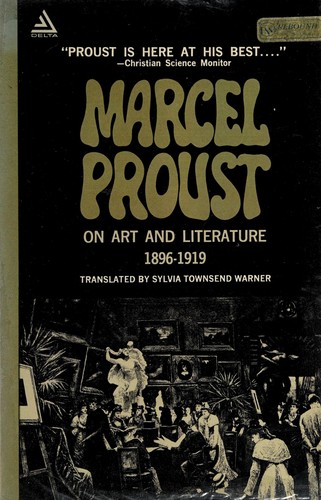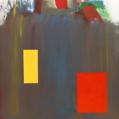gesang reviewed Marcel Proust on Art and Literature, 1896-1919 by Marcel Proust (Greenwich editions)
For its Milieu
4 stars
Proust got a high-end taste that suits his convoluted and wreathed impressionist prose style well. The way the sentences linger and leisurely unfold reflects the milieu - the Fin-de-Siecle France - better than the content of Proust's thoughts, and hence, at times, the sentences might seem overworked, not suitable for expressing certain moods, conveying certain atmosphere, that are rather crude and don't fit well with the elegant milleu immersed in the fragile paintings of Renoir, pre-Raphaelites and the symbolist irrationalism of art noveau and Gustav Moreau, the ethereal and artistic thoughts of Emerson, Carlyle, Ruskin, the music of Debussy and (early) Ravel.
After reading four hundred pages of flowery and misty proses, it would become clear what Satie and Cocteau were opposing to and why, and that the geometricism of Bauhaus and the pristine simplicity of Eric Gill's font design and sculptures will soon revolt against the rather suffocating climate, …
Proust got a high-end taste that suits his convoluted and wreathed impressionist prose style well. The way the sentences linger and leisurely unfold reflects the milieu - the Fin-de-Siecle France - better than the content of Proust's thoughts, and hence, at times, the sentences might seem overworked, not suitable for expressing certain moods, conveying certain atmosphere, that are rather crude and don't fit well with the elegant milleu immersed in the fragile paintings of Renoir, pre-Raphaelites and the symbolist irrationalism of art noveau and Gustav Moreau, the ethereal and artistic thoughts of Emerson, Carlyle, Ruskin, the music of Debussy and (early) Ravel.
After reading four hundred pages of flowery and misty proses, it would become clear what Satie and Cocteau were opposing to and why, and that the geometricism of Bauhaus and the pristine simplicity of Eric Gill's font design and sculptures will soon revolt against the rather suffocating climate, to be followed by the uncompromising masculinity and the hyper-rational coldness and abstractness advocated by futurists and vorticists.
I doubt that Marcel Proust really understood the arts of Chardin and Rembrandt. His taste is way too delicate to really appreciate these painters, and sometimes he fails to note the darkness and tragedy behind some seemingly beautiful scenes. It might be that what is seen by Proust is itself something worth studying. Surely when Chardin painted his celebrated La raie there wasn't anything related to death and decay in his mind, but the tradition of vanitas painting and the Mozartian spirit of the age is obviously present in the disgusting - while beautifully and calmly rendered - appearance of the gutted ray. It might also be that Proust lived inside the tradition that was perpetuated from Chardin's time but already exhausted and depleted of its essence, the rationality and the life force intrinsic to which forgotten.
Nevertheless it is a pleasure to read criticisms and reviews by someone who captures Tolstoy so accurately,
[…] humanity is judged […] in Tolstoi, by a serene god. […] This is not the work of an observing eye but of a thinking mind. Every so-called stroke of observation is simply the clothing, the proof, the instance, of a law, a law of reason or of unreason, which the novelist has laid bare.
Also Proust obviously will, if a comparison is required, prefer Tolstoy over Doestoevsky, who is, in my opinion, far too overrated by sentimentalists and those who equate religiousity with hysteria.

